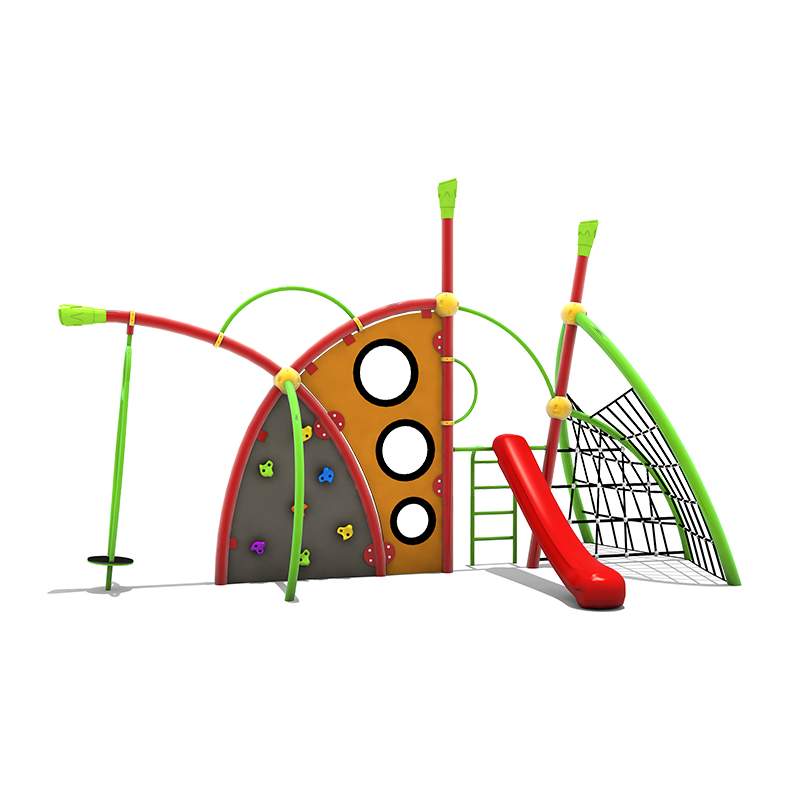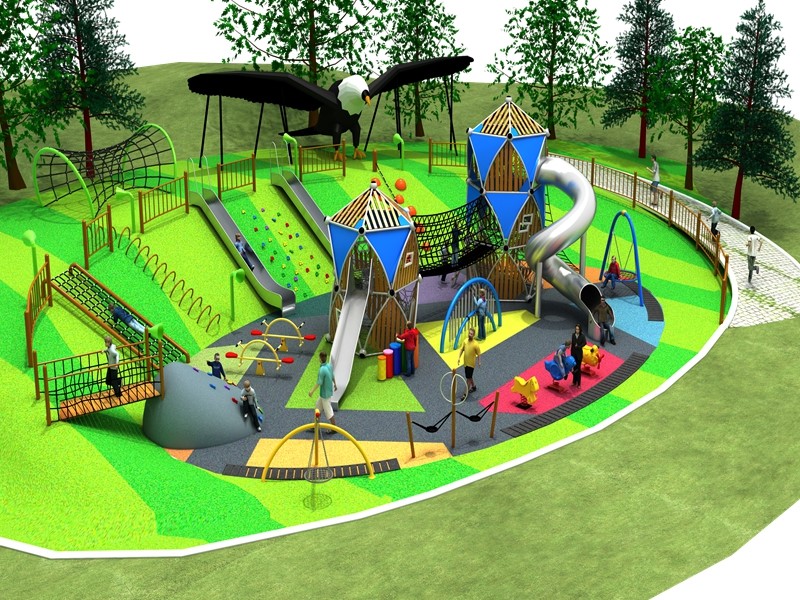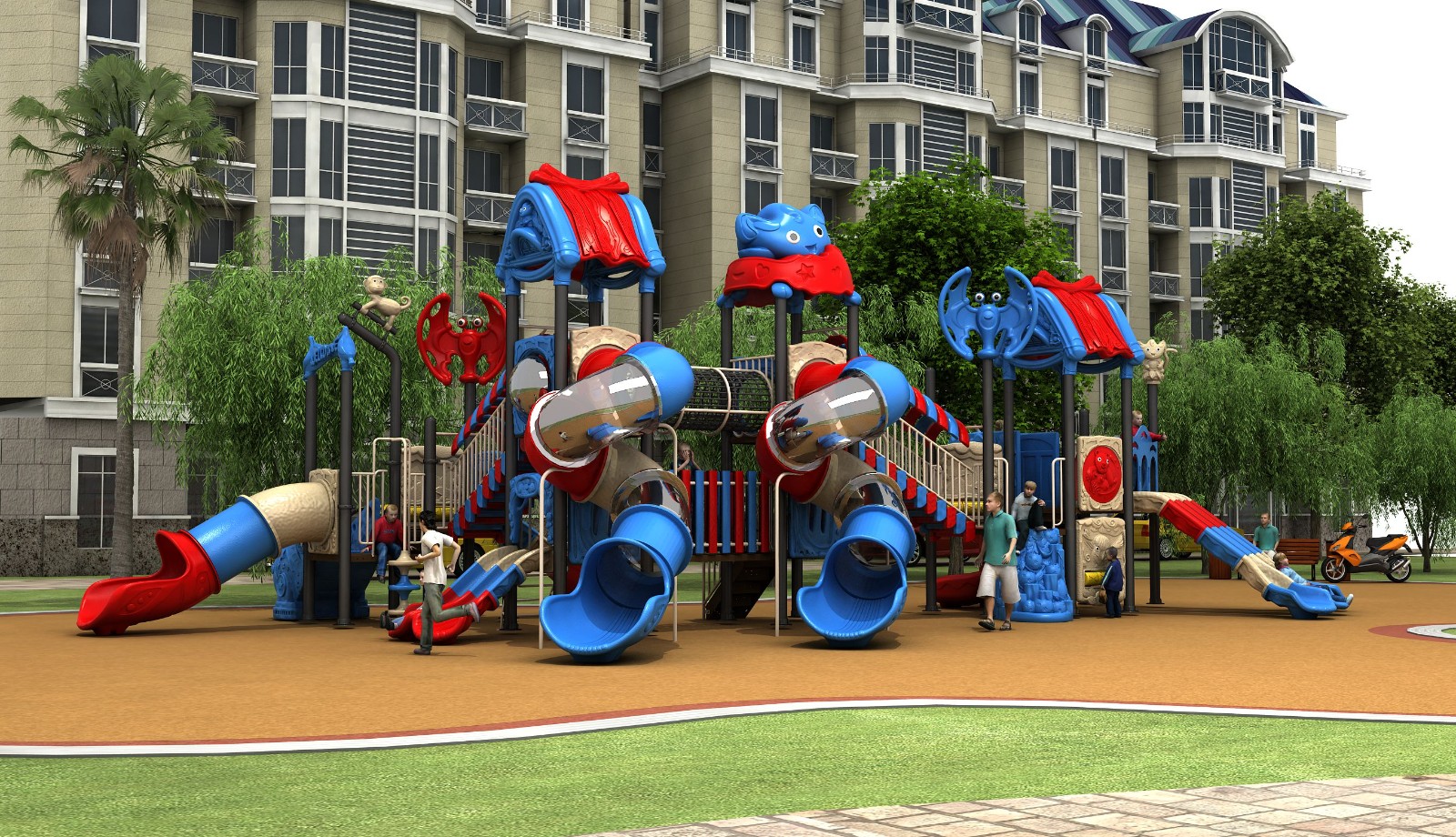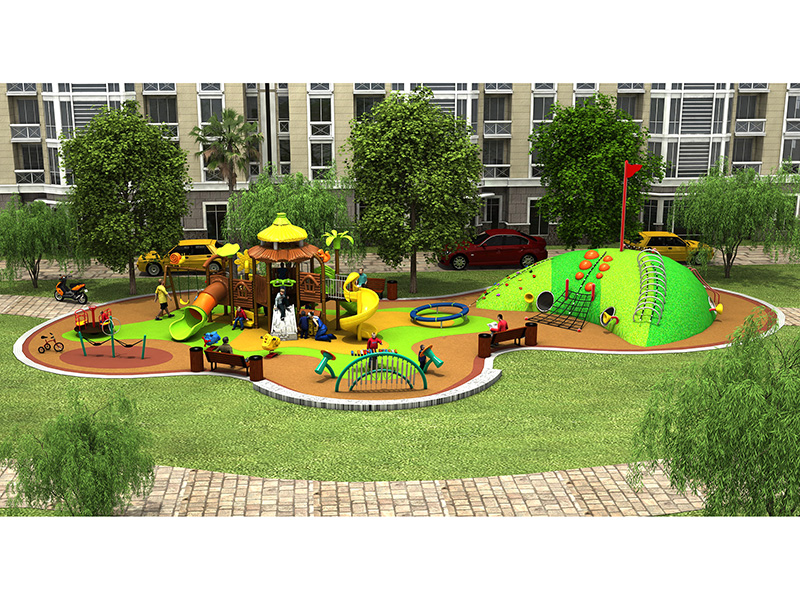Please contact us!
playground things
Categories:Outdoor playground
Play Events
Swings, slides, playground climbers, see saws, merry-go-rounds, spring riders, and tubes are the basics.
Common Playground Equipment Names and Terms

Playgrounds of all shapes and sizes offer kids the opportunity to play. The bright colors and stimulating configurations of a great playground can engage kids in ways they don’t experience anywhere else, giving them a chance to let their imaginations run wild. While playgrounds have evolved over the years to include more safety and accessibility features, you’ll find many staples at any kid-approved play site.
Expanding your playground equipment vocabulary is an essential step in understanding what makes a playground great and what to look out for when planning a new site.
Read the full article or jump to a specific section:
Names of Playground Equipment
Merry-Go-Round
Teeter-Totter
Giant Stride
Monkey Bars
Still Rings
Modern Playground Equipment Names
Swings
Slides
Playground Climbers
Spring Riders
Spinners
Site Amenities
Design-Related Terms
Safety Terms
Acronyms to Know
Bring Your Playground to Life

Playground Equipment Names
If you haven’t hit the playground for a few years, you’ll probably notice that some of your old favorites have been updated in appearance or renamed for modern requirements.
In some cases, certain types of playground equipment have fallen out of favor or the terminology becomes dated because of new safety guidelines. Some types of playground equipment have been discontinued altogether for being out of compliance with modern safety standards. But even though safety guidelines have changed, that doesn’t mean you won’t see some familiar playground items installed on newer sites.
1. Merry-Go-Round
Merry-go-rounds, also known as roundabouts or carousels, are one of the classic playground fixtures that daredevils love to push to its limits. These large pieces of equipment allow kids to hop on and spin around as quickly as they can by pushing against the ground to develop momentum. While this type of playground equipment is still fairly common, “merry-go-round” is no longer enough of an umbrella term to cover the many types of spinning playground equipment.
Merry-go-rounds, and other playground favorites like seesaws and swings and slides, must meet specific guidelines outlined by the United States Consumer Product Safety Commission’s (CPSC) Handbook for Playground Safety.
2. Seesaw
Another familiar entry on the favorite playground equipment list is seesaws — also known as teeter-totter. The CPSC handbook notes that traditional fulcrum teeter-totters must limit their maximum angle to 25 degrees, and partial car tires or other shock-absorbing materials should be used to cushion impacts. The safest version of the seesaw has a spring center, which stops hard landings for one rider if the other rider falls off.
3. Giant Stride
This piece of equipment hasn’t been seen for almost half a century, and is not recommended by the CPSC.
The giant stride consists of a tall pole fixed in the ground. Ropes with ladder-like bars hang down so kids can grab them. The idea is that kids hold onto the bars for dear life and run around as fast as they can, sometimes resulting in a brief moment of “flying” or hovering above the ground while spinning. Aside from its lack of accessibility, the giant stride also tends to result in kids smacking into each other or the pole.
4. Monkey Bars
In their classic form, monkey bars are just a horizontal ladder suspended above the ground by upright poles. They allow kids to hop up and swing from bar to bar much like a chimpanzee. Monkey bars were also usually a feature of larger jungle gyms, which gave kids the opportunity to climb and swing in different directions.
While monkey bars are still loved and found in playgrounds everywhere, the original design has been updated and altered in so many ways — it’s often not just a horizontal ladder anymore — that you sometimes need more specific terminology to describe it. When someone mentions a “ring climber,” they’re talking about one of the many monkey bar adaptations.
5. Still Rings
Still rings — similar to the kind used in gymnastics, and hung from long chains on playgrounds — are still very much a part of playgrounds. It’s common to see them labeled as therapeutic hand rings, with shorter chains. Children can practice their upper body strength by supporting their body weight when hanging from the rings.
Modern Park Playground Equipment Names
Modern playgrounds usually include a combination of swings, slides, climbers, spring riders, and spinners to maximize fun, safety, and accessibility. Many new types of playground equipment will also help improve coordination, strength, and critical thinking (among other benefits).
Knowing the terminology of the equipment will help you better understand your options when you’re browsing for new playground items and fixtures. This playground equipment list will help clarify each type of equipment and explain how it fits into the vision you have for your playground.
1. Swings
Swings are still swings, but there are many different types of swings to choose from.
Your average playground swing is usually the kind with belt seats that bend when you sit in them. Some new variations of the classic swing though are meant to change up the ride as well as be more inclusive for all riders:
Accelerator swing
This is a group swing, usually with a big disc for kids to sit on. It generally works the same as a traditional swing, but multiple kids can use it at once, and it’s more interactive.
Generation swing
For playgrounds where lots of parents or grandparents bring kids, a generation swing is fantastic. This variation has the motion of a traditional swing, but the sitting surface combines an enclosed seat for toddlers as well as an open seat big enough for an adult.
Viper swing
This fun group swing features a giant in-line rope that can fit several people on it. The design of the swing means users have to practice cooperation and teamwork to create the right motion.
Inclusive swing seat
If a child isn’t ready for the standard belt swing or bucket swings, inclusive swing seats provide a safe ride while also letting kids develop coordination and balance. Inclusive seats are meant to accommodate kids of all shapes, sizes and abilities
Another consideration is the type of seat you want for your swing. Bucket seats are what you find on swing sets for babies and toddlers, while the most common type of seat for an A-frame or arch frame is the belt seat.
2. Slides
Slides haven’t exactly changed since the old days — the only substantive difference is that metal slides are now a lot less common than plastic. The small rush a kid gets as they speed down toward the ground makes slides one of the most popular pieces of playground equipment.
Even if there’s nothing else in the area yet, if you have a slide, you have a solid start for a full playground. When talking about slides, these are the main features you’ll be describing:
Open vs. tube
Tube slides are enclosed all the way around, while open slides let kids — or particularly playful adults — feel the wind in their hair.
Straight vs. curved
An ordinary straight slide is fun by itself, but adding curvature can take things to the next level. Curved slides come in L and S shapes, as well as spirals that are measured by angle. A 360° slide sees kids making one full rotation before their feet hit the ground.
Component vs. free-standing
Slides can be purchased as additional components for existing play equipment, or they can come as a free-standing feature with their own stairs. These are often called tower slides.
Other cool variants include roller slides, wavy slides and dual entry slides that can introduce the fun of racing to the mix.
3. Playground Climbers
One of the most thrilling parts of a playground is the climber equipment. Climbers are all manner of equipment that encourages kids to use their developing muscles to scale to the top of the structure. The classic many people remember from childhood is the geodesic climber, a dome shape made by dozens of interconnected metal triangles. Climbers are some of the most versatile playground equipment and come in a variety of themes and configurations, including:
Walker climbers
Vine climbers
Vertical climbing walls
Rocks
Logs
Noodle climbers
Tensile climbers
Ring climbers
These are just a sampling of the many types of equipment designed for kids to climb all over. Playgrounds designed for older kids naturally have bigger climbers with more difficult features, such as having to climb them vertically. Younger kids benefit from climbers that are shorter and angled for easier climbing that still helps develop their muscles.
4. Spring Riders
Few things inspire the imagination like the spring rider. These have remained largely unchanged and immediately recognizable to most people. They consist of a seating component that often comes in a fun shape, and a spring placed into the ground. Once a kid sits on a spring rider, they can bounce off to their own magical play scenarios.
Spring riders are an excellent way to add depth to a themed playground. Whether it’s a thrilling expedition on a spaceship or a fascinating deep-sea dive on the back of a sea creature, spring riders help capture kids’ imaginations in exciting ways.
5. Spinners
The concept of the merry-go-round has given rise to several equally exhilarating variations, all known as spinners. As you can imagine, spinner equipment is defined by the delight of rotating quickly in place. In addition to being pure fun, spinning actually has multiple developmental benefits for kids. It can enhance their sense of touch and balance, as well as improve posture control.
Every type of spinner works a little differently, even though they’re all based on the same principle. Some spinners can accommodate multiple kids, while others are meant for one. Some of the spinner types you may see include:
Barrel ride spinner
Saddle seat spinner
Maypole spinner
Tornado spinner
Whirl spinner
One of the most important updates to the classic whirl is the inclusive whirl, which sits flush with the ground allowing those who use wheelchairs and others to get in on the fun.
Site AmenitiesWhen you’re planning a playground, it’s not just about the structures that kids will be wrangling. Adults have to sit somewhere too, and playgrounds need more than just play equipment to provide the best value to users. Site amenities include:
Benches
Trash receptacles
Picnic tables
Grills
Bike racks
Border timbers
Welcome signs
Ensuring a healthy number of site amenities is essential to making a playground appeal to everyone who might use it. With the right amenities, a playground can evolve into a community fixture where the whole neighborhood can gather for events large or small.
Design-Related Terms
When designing a playground or talking about the elements of an existing one, you’ll want to be familiar with the following terms:
Age separation: Playgrounds are often built to cater to more than one age group. In these cases, age separation refers to the division of the playground into areas clearly marked to help kids and their parents find the appropriate section for their age group.
Composite structure: These are structures made by linking two or more other structures together. Composite structures are attractive as they create one large unit that offers kids multiple stimulating activities.
Designated play surface: The Handbook for Public Playground Safety defines this as any elevated surface where kids will walk, crawl, sit or climb. It additionally refers to any flat surface that’s larger than 2 by 2 inches and is less than 30° from being horizontal.
Exit region: This is the spot at the bottom of slides, designed to allow kids a safe, level exit after cruising down the slide. An important requirement is that the exit region needs to have rounded edges to keep kids from cutting themselves upon exiting.
Safety Terms
Naturally, safety should be a central concern with any playground. You may find yourself scratching your head wondering, What is playground fall height? Or, what’s the difference between a playground safety zone and the use zone? The following playground terms are the most important to remember in regards to the safety of equipment:
Entanglement: This is any time a kid’s clothes or something around their neck gets caught on any piece of equipment.
Entrapment: This is when a kid gets any body part stuck in equipment, such as a railing, and can’t withdraw the body part from the opening.
Fall height: This measures the distance between protective playground surfacing and a structure’s tallest designated play surface.
Safety zone and use zone: These are the places designed for kids to move around safely and use the equipment. They are often interchangeable.
Fall zone: The surfaces surrounding equipment where a kid is likely to land if they fall off or exit the equipment or structure.
Acronyms to Know
As with any industry, playground equipment has acronyms all its own. A common question is, What does ADA accessible mean for playgrounds? These acronyms are essential to effectively discussing and choosing playground equipment.
ADA: The Americans With Disabilities Act was introduced in 1996 to prevent discrimination against people with disabilities. The Access Board provides guidelines for playgrounds to ensure kids of all abilities can enjoy their time at play.
ASTM: The American Society for Testing and Materials is an international consumer safety organization. Their guidelines govern the materials used in playground equipment, making sure it’s safe and long-lasting.
CPSC: The Consumer Products Safety Commission is an agency of the U.S. government. It provides regulation for the manufacture and sale of playground equipment and acts as another consumer watchdog for product quality and safety.
IPEMA: The International Play Equipment Manufacturers Association is a third-party certification body for both play equipment and surfacing materials. They provide services for equipment in the U.S. and Canada.
Bring Your Playground to Life With Dream garden
Playgrounds are a unique space for kids to just be kids. In addition to the positive effects exercise has on child development, playgrounds offer chances for interaction that just don’t happen anywhere else. Collaborating on different types of equipment requires kids to use their budding social skills to cooperate and have a good time.
Having the right equipment for your playground can transform it into a place where kids learn and have fun in equal measures, but it’s not always easy to do the design work yourself. If you have any questions about the design or capabilities of playground equipment, Miracle Recreation is here to help.
Our expert representatives are happy to walk you through whatever questions you may have regarding playground equipment, and provide a personalized quote for your vision. Use our rep locator today and take the first step to setting your perfect playground in motion.












































